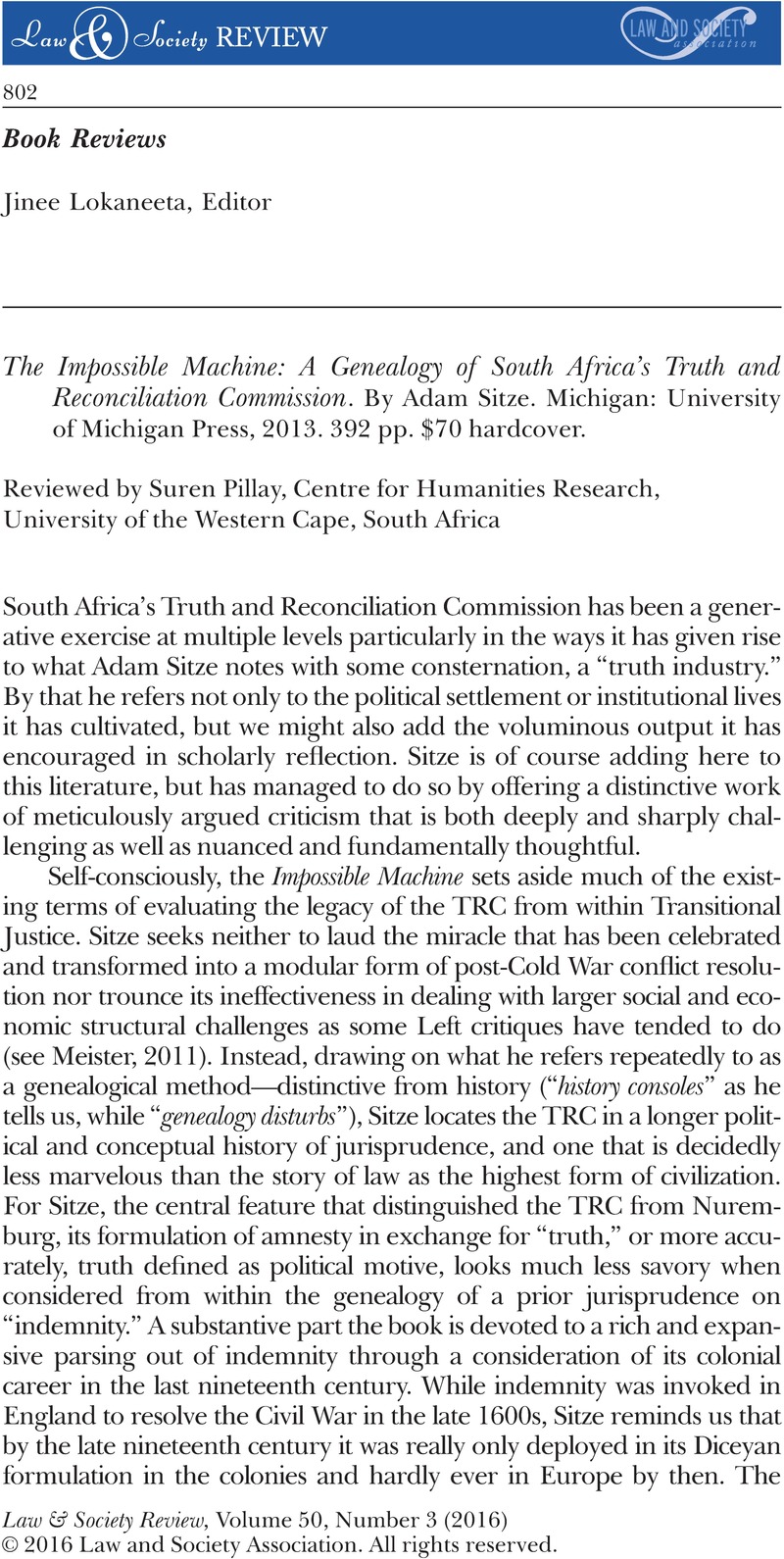No CrossRef data available.
Article contents
The Impossible Machine: A Genealogy of South Africa's Truth and Reconciliation Commission. By Adam Sitze. Michigan: University of Michigan Press, 2013. 392 pp. $70 hardcover.
Review products
The Impossible Machine: A Genealogy of South Africa's Truth and Reconciliation Commission. By Adam Sitze. Michigan: University of Michigan Press, 2013. 392 pp. $70 hardcover.
Published online by Cambridge University Press: 01 January 2024
Abstract
An abstract is not available for this content so a preview has been provided. Please use the Get access link above for information on how to access this content.

- Type
- Book Reviews
- Information
- Copyright
- © 2016 Law and Society Association.
References
Mamdani, Mahmood (2002) “Amnesty or Impunity? A Preliminary Critique of the Report of Truth and Reconciliation Commission of South Africa (TRC),” 32 Diacritics 3–4, 33–59.CrossRefGoogle Scholar
Meister, Robert (2011) After Evil: A Politics of Human Rights, New York: Columbia Univ. Press.Google Scholar
Moyn, Samuel (2010) The Last Utopia: Human Rights in History, Cambridge, MA: Harvard Univ. Press.Google Scholar


